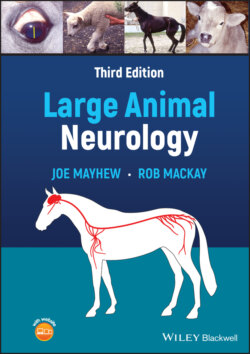Читать книгу Large Animal Neurology - Joe Mayhew - Страница 20
History
ОглавлениеIn addition to taking a general history of the patient, questioning of the client should focus on the primary complaint. Information concerning the precise circumstances of the environment, other animal contacts, and the nature of the first signs observed ought to be sought first. Further questioning is aimed at defining a relationship between the severity of the syndrome and the passage of time—the sign:time graph.
Most congenital and familial diseases begin early in life, and signs usually progress relentlessly. Even structural neuraxial malformations, such as myelodysplasia, will frequently show progressive signs as the patient matures and ages. Syndromes resulting from physical causes, particularly external injury, have a sudden onset and after days then often stabilize or improve. Signs caused by infectious agents can be acute or chronic, and frequently fluctuate in severity. Immune‐mediated diseases often result in fulminant signs that can improve dramatically, particularly with therapy. Progression of metabolic, toxic, and nutritional disorders, which are usually symmetric, is very variable. Perhaps surprisingly, signs due to neoplastic involvement of the nervous system may begin abruptly and even wax and wane, but most often are progressive.
Historical data can give clues as to how widespread, focal, or multifocal the disease process is, whether there was evidence of asymmetry, and how severe the signs have been. These aspects of the pathogenesis of diseases are obviously helpful in determining the cause.
